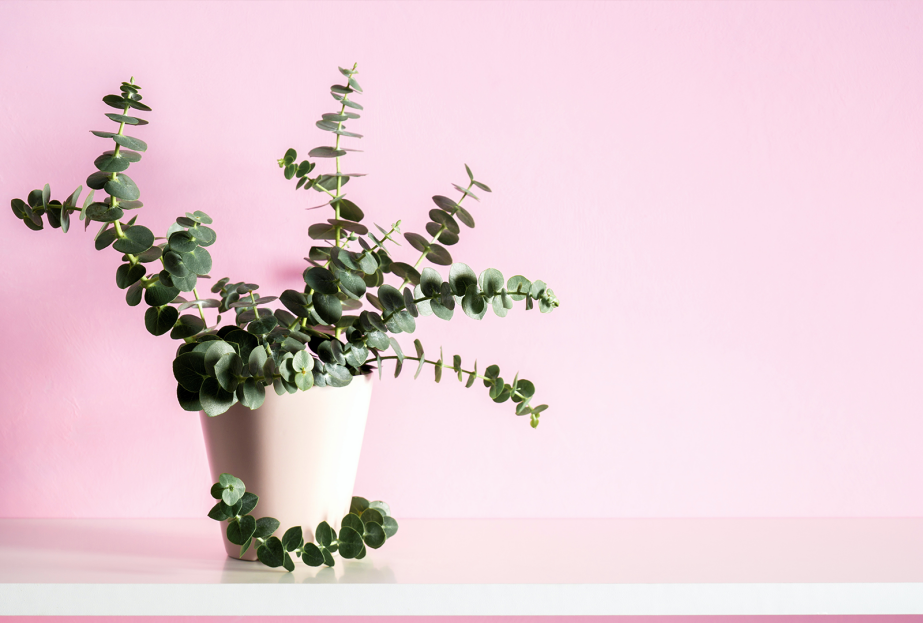
Eucalyptus is known for its refreshing, aromatic leaves and unique appearance. Native to Australia, this evergreen plant is often grown for its fragrant oils, but it can also make a stunning addition to your indoor garden. Though Eucalyptus is typically seen in outdoor settings, it’s possible to successfully grow it indoors with the right care. If you’re looking to grow this fragrant beauty in your home, here’s a guide on how to care for a Eucalyptus houseplant.
Eucalyptus plants thrive in bright, direct light and will need plenty of sunshine to grow well indoors. Place your Eucalyptus near a south or west facing window where it will receive several hours of direct sunlight each day. If your plant isn’t getting enough light, it may become leggy and fail to thrive, so aim to give it as much light as possible.
If you don’t have a suitable window, you might consider supplementing with a grow light to ensure your Eucalyptus plant gets the light it needs. However, keep in mind that a lack of light can result in slower growth, so bright indoor spots are key.
Eucalyptus is a relatively drought-tolerant plant, but it does need consistent watering to stay healthy. Water the plant when the top inch of soil feels dry, but be careful not to overwater. Too much water can cause root rot or yellowing leaves. Ensure your pot has adequate drainage to avoid water accumulation at the bottom.
During the warmer months (spring and summer), your Eucalyptus will likely need more water, especially if it's growing rapidly. In winter, when the plant is in a dormant phase, you can reduce watering to avoid root rot. Always make sure the water drains freely from the pot and that the plant isn’t left sitting in water.
Eucalyptus prefers well-draining soil, so a loamy, sandy mix is ideal. You can also add some perlite or sand to regular potting soil to improve drainage. The key is to ensure that the soil doesn’t retain too much moisture, as Eucalyptus plants do not like soggy conditions.
When selecting a pot for your Eucalyptus, choose one that has drainage holes to prevent water from pooling at the bottom. A terra cotta pot is often a great choice because it helps with drainage and allows the soil to dry out more quickly. Repot your Eucalyptus every couple of years, or when you notice that its roots are becoming cramped and need more space.
Eucalyptus plants prefer warm temperatures and mild indoor conditions. They thrive in temperatures between 60°F and 80°F (15°C to 27°C), so make sure they are not exposed to cold drafts or temperatures below 50°F (10°C). Keep your Eucalyptus away from air conditioners, open windows, and heaters, as extreme temperature fluctuations can stress the plant.
As for humidity, Eucalyptus plants are relatively tolerant of average indoor humidity. However, they do appreciate slightly higher humidity levels, especially during the winter months when indoor air can be dry. You can increase the humidity by misting the plant lightly or placing it near a humidifier if the air is too dry.
Eucalyptus isn’t a heavy feeder, but it can benefit from a bit of fertilizer during its growing season. Use a balanced, liquid fertilizer diluted to half strength and apply it every 4-6 weeks during the spring and summer months. Avoid fertilizing in the winter when the plant is not actively growing.
Be cautious with fertilizing — too much can lead to excessive growth and weak, leggy stems. It’s best to under-fertilize than to overdo it.
Pruning is an essential part of caring for a Eucalyptus houseplant, as it helps control its size and encourages new, healthy growth. Prune back any dead or damaged branches to keep the plant looking neat. If your Eucalyptus plant becomes too leggy or tall, prune it back to encourage bushier growth.
The best time to prune your Eucalyptus is in early spring, before the plant starts actively growing again. Regular pruning will help maintain its shape and encourage stronger, more compact growth.
While Eucalyptus is non-toxic to pets, it is always a good idea to keep the plant out of reach, as its strong fragrance can be overwhelming to some animals. If ingested in large amounts, it could cause some digestive discomfort for pets, so it’s best to place it in an area where they can’t nibble on it.